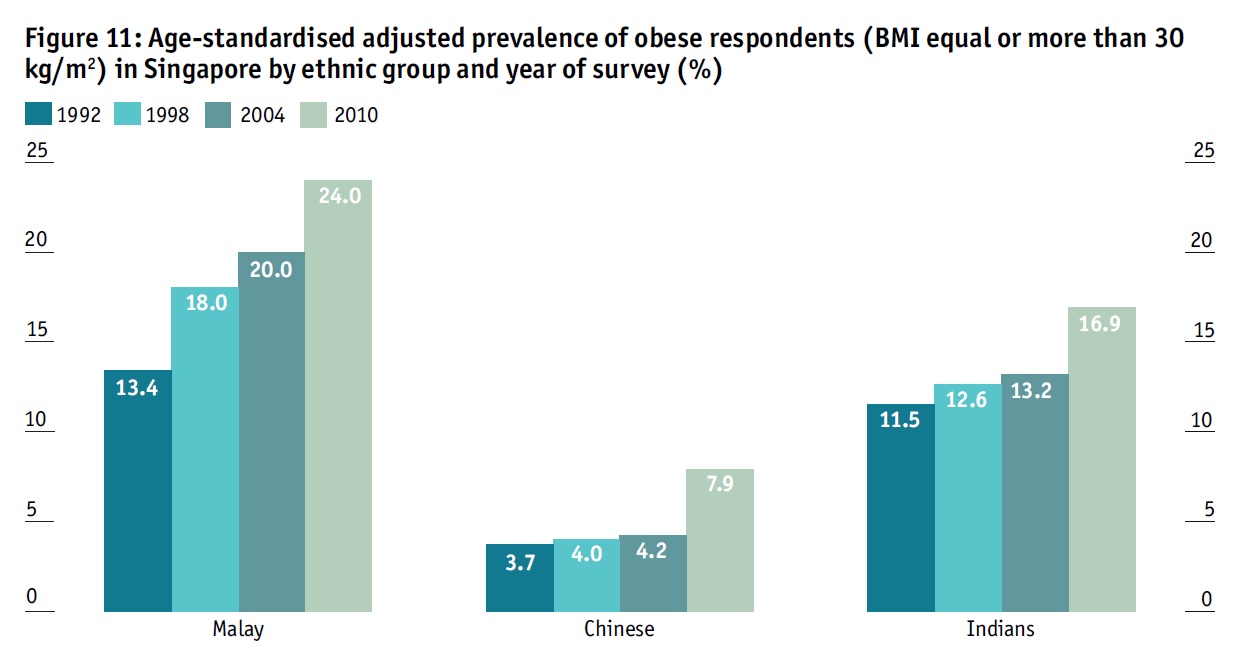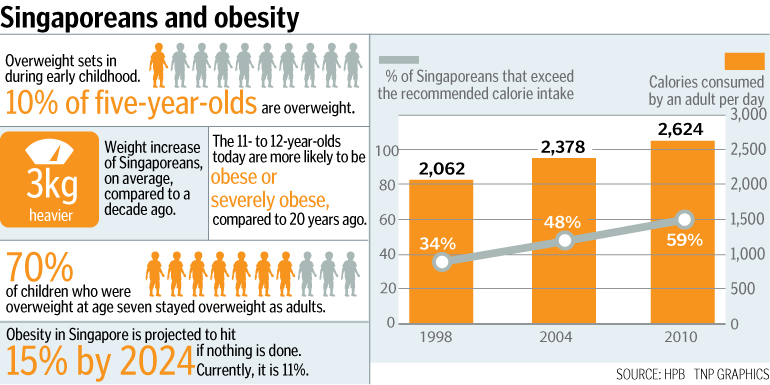
News & Events
The State of Obesity in Singapore
By Food Industry Asia (FIA)
Singapore has the second-highest overweight prevalence in the Association of Southeast Asian Nations (ASEAN) – at 32.8 per cent, according to 2014 age-standardised adjusted estimates by the World Health Organization (WHO). According to a recently released report by the Economist Intelligence Unit (EIU), among the ASEAN 6, Singapore was tied with the Philippines for the third-highest rate of increase in number of obese people between 2010 and 2014, at 24 per cent.
The report, “Tackling obesity in ASEAN: Prevalence, impact, and guidance on interventions”, which was commissioned by the Asia Roundtable on Food Innovation for Improved Nutrition (ARoFIIN), has revealed that obesity cost Singapore about a total of US$0.4-1 billion in 2016, up to 9.64 per cent (direct and indirect costs) in healthcare spending, as well as up to six and 10 productive years lost for males and females, respectively.
Furthermore, in terms of obesity prevalence and increase, the report states that there is considerable variation by ethnicity within a population. In Singapore, Malays had the highest prevalence of obese people in 2010 – at 24 per cent, compared to 7.9 per cent among Chinese; and Indians suffered from a higher obesity prevalence than Chinese, but were experiencing a slower increase over time. Secondly, abdominal fatness – an alternative measure of obesity – revealed a rather different story, in which Indians had both the highest obesity rates as a percentage, and the highest growth rate.

Additionally, new data released by Singapore’s Health Promotion Board (HPB) shows a population-wide shift toward obesity. The HPB study, which tracked more than 60,000 people starting in 1990 – following some participants from childhood through the time they started work – found that Singaporeans, on average, are 3kg heavier today than they were 15 years ago, more likely to overeat and tend to put on weight once they enter the workforce. The primary contributing factors, researchers found, are a decrease in physical activity and increase in calorie intake.

The study found that even though Singaporeans are exercising slightly more these days – 59.6 per cent of the population gets the recommended 150 minutes of physical activity per week, they are eating so much that it outweighs any benefit to their health. While people consumed 2,062 calories per day on average in 1998, with a third of them eating more than the recommended amount; by 2010, they were consuming 2,624 calories daily. This translates to an increase from 34 per cent to 59 per cent of people who exceeded their recommended daily calorie intake between 1998 and 2010, or six in 10 Singaporeans who do so.
The study also found that due to more sedentary lifestyles among Singaporeans, childhood obesity is on the rise, and that some of the most significant weight gain takes place when Singaporeans join the workforce.
The HPB analysis found that seven in 10 children who are overweight at age 7 will remain that way well into their adult years – contrary to popular belief that all chubby children will outgrow their baby fat. In Singapore, one in 10 children are overweight by age 5, and compared to several decades ago, children these days are finding it harder to lose weight.
The study also found that young workers, particularly men, typically gain 4kg within the first decade of starting work. While findings showed that obesity rates were generally stable for both males and females during the school years (ages 5 to 18), the proportion of overweight people in each age bracket began to grow starting from the age of 21, when many people start full-time work. Last year, for those aged between 30 and 39, 42 per cent of men and 28 per cent of women were obese.
Singapore’s government, in acknowledging this epidemic and its related challenges and implications, has responded proactively with national strategies that include the implementation of health promotion policies, promotion of supportive environments, partnerships to increase availability of healthy options, and the use of technology in media campaigns to promote physical activity. Among these efforts are the school-based Trim and Fit (TAF) Programme introduced by the Ministry of Education (MOE) in 1992, as well as the HPB-led National Steps Challenge, Healthier Choice Symbol food labelling programme and Healthier Dining Programme.
Continuous, whole-of-society efforts are needed. If action is not taken, the EIU report states, countries could find themselves fighting a range of related non-communicable diseases (NCDs) that include type 2 diabetes, cancer, cardiovascular disease and stroke, as well as chronic diseases such as musculoskeletal disorders. As for Singapore, according to HPB data, if the population-wide shift toward obesity is not slowed down or halted, the nation could reach a tipping point – in just seven years – and lose valuable ground in its fight against obesity.
The Asia Roundtable on Food Innovation for Improved Nutrition (ARoFIIN) leverages on public-private partnership to bring together experts from across government, academia, industry and civil society sectors across Asia, to initiate and sustain regional, multi-stakeholder dialogue on the role of food innovation in tackling obesity and chronic disease in Asia. ARoFIIN is convened by the Agency for Science, Technology and Research (A*STAR), Health Promotion Board (HPB) and Food Industry Asia (FIA).

